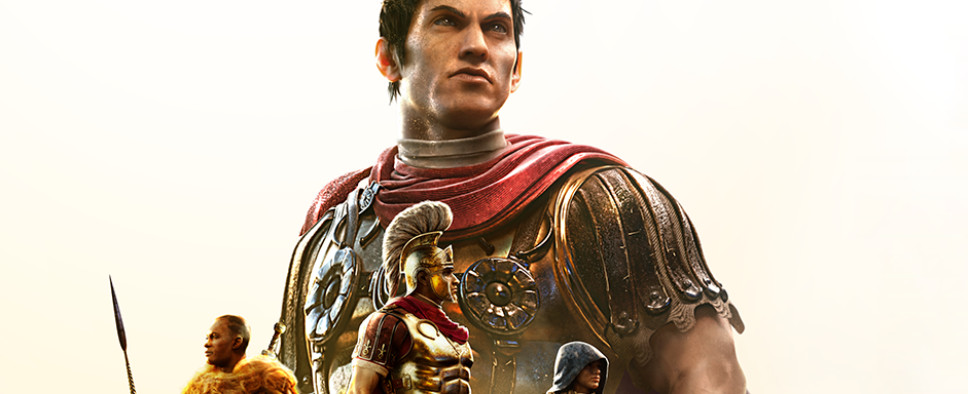Expeditions: Rome Review - Page 3
-
Category: ReviewsHits: 10292

Article Index
With this being the case, it's then a mystery why the game insists on throwing you into the thick of inaction so often, especially when it has a perfectly good overworld map to work with. Right now, in order to manage your camp, you need to click on it, sit through a, thankfully brief, loading screen, assign your new orders, resupply, pick up your new stratagems, then leave the camp and sit through another loading screen. You really should've been able to do all of this through some menu.
And, one final thing to mention here, just like in the previous Expeditions game, while overall this is a very much historical affair with no magic or monsters, there are some minor supernatural elements here. But they always leave plenty of room for a scientific interpretation if that's your thing.
Divide and Conquer
So, while the previous sections describe a pretty good game that could still use some work, now we're getting to the main reason why I enjoyed Rome as much as I did. The game's combat.
At its core, it's still a squad and turn-based affair with roots firmly planted in both Conquistador and Viking where during your turn you can move your characters in whichever order you see fit, but with the benefit of experience, Rome iterates on those ideas to create something truly spectacular.
First of all, very few battles simply task you with eliminating your enemies. Most of the time, you'll have some specific objective to win an encounter, like defeating an enemy leader, saving some hostages, burning enemy supplies, surviving an ambush, or even stealing some artifact.
These objectives result in very dynamic battles where you have to actually do things and utilize strategic thinking, as opposed to just hiding behind a piece of cover and waiting for the enemy to come to you. Paired with a great level design where maps tend to have multiple approach paths, varying levels of elevation, and numerous interactable items like destructible barricades and javelin stockpiles (that the AI doesn't hesitate to use against you), this creates some very enjoyable encounters.
And then, every once in a while, you get to participate in a siege that's like this grand set-piece battle where you'll be commanding your entire party, frequently joined by AI allies, in a multi-stage endurance battle where conserving health and resources is an added concern. You'll have to split your team into several squads, each with its own set of objectives, and once those are done, you'll usually get a chance to regroup and keep pressing your advantage in a battle with dozens of participants aided by some catapult fire.
Now, you might be wondering how such massive battles don't turn into an absolute slog. Rome solves this issue by giving us an animation speed slider that makes everything move at a brisk pace, but without turning the whole thing into some clown fiesta where character models are just zooming all over the place. It also makes it so the AI moves in batches whenever possible, and even you don't have to wait for your characters to finish moving before issuing new commands.
In recent years, I've been using Blackguards as the gold standard when assessing how good a game's encounter design is, and I have to say that Rome is definitely on that level. And while not an expansive RPG with countless side-quests, Rome does have plenty of interesting quests, some limited exploration, and the whole legion system, which all come together to offer a well-rounded experience that will take you in the vicinity of 50-60 hours to complete.
As a Roman, you'll have access to four classes of soldiers - a man with a shield, a scout, an archer, and a support/pikeman hybrid. And while most of the enemies you'll be facing will follow the same pattern, the later chapters will have you cross swords with shamans, berserkers, and other barbarian classes that shake things up. Though unless I missed something, unlike Conquistador, you won't be able to recruit any of those for your squad.
Each class will have access to three unique skill trees. These aren't particularly extensive, but still offer enough build variety to have at least two members of each class in your party specializing in completely different things. And while initially, some classes seem significantly stronger than others, after some skill point investment, both archers and scouts find their own niche and become absolute beasts if you use them right.
Apart from character skills, weapons in this game don't have auto attacks and instead come with a selection of active skills. As a result, you can have weapons with identical stats but different skills available to them, leaving a lot of room for experimentation when it comes to your loadout.
Now, the unfortunate part here is that you can't just say you want a sword with skills A, B, and C, and just get it. These are rolled randomly whenever you loot a weapon, or when you craft it. So if you really want a particular selection of skills, you'll need to craft a lot of swords.
As someone who doesn't like crafting in games, I wasn't particularly thrilled by this prospect, but at least the crafting system in this game is intuitive and not too annoying. And once you have the gear you like, you can keep upgrading it instead of crafting new stuff every few missions.

